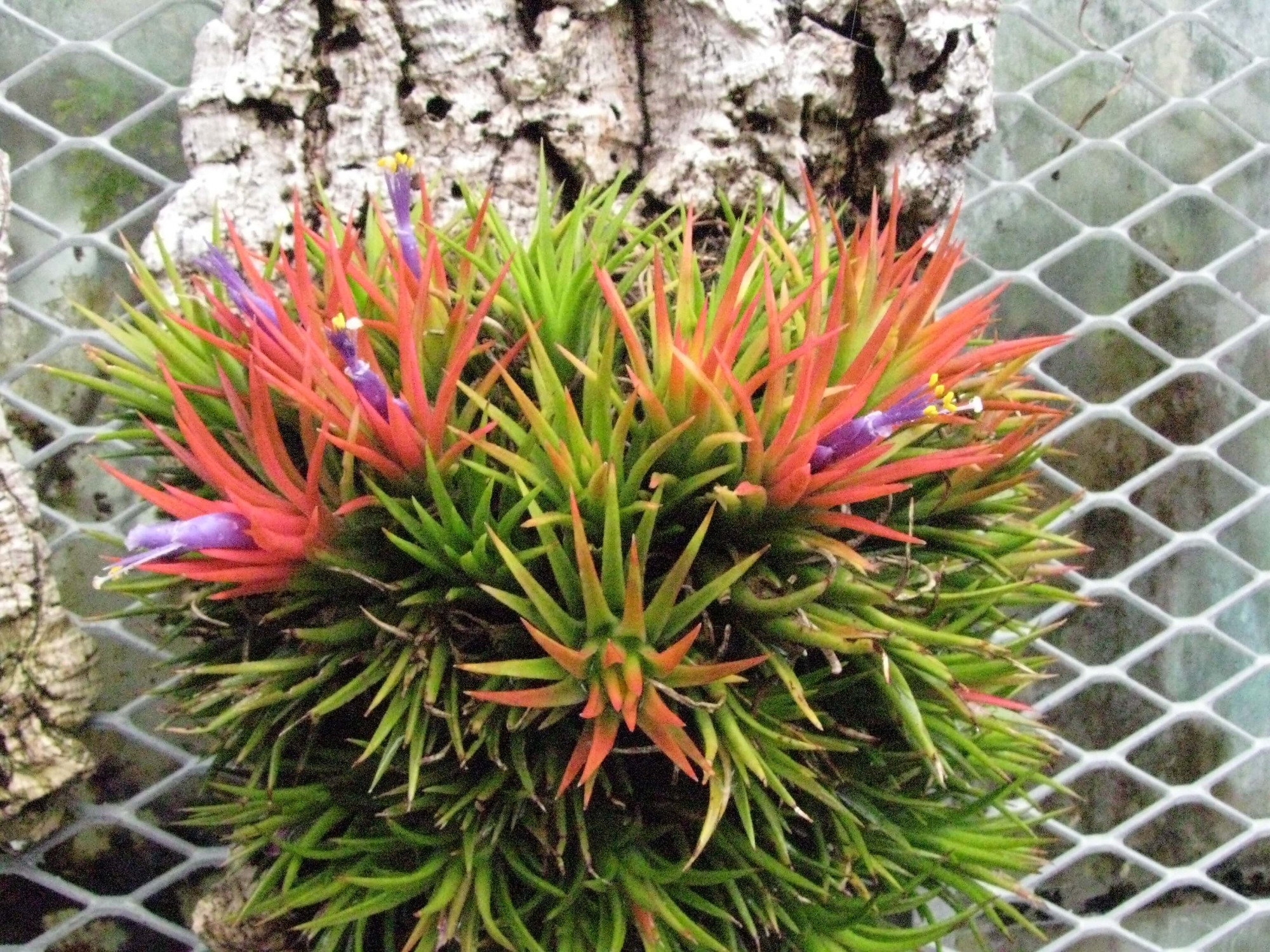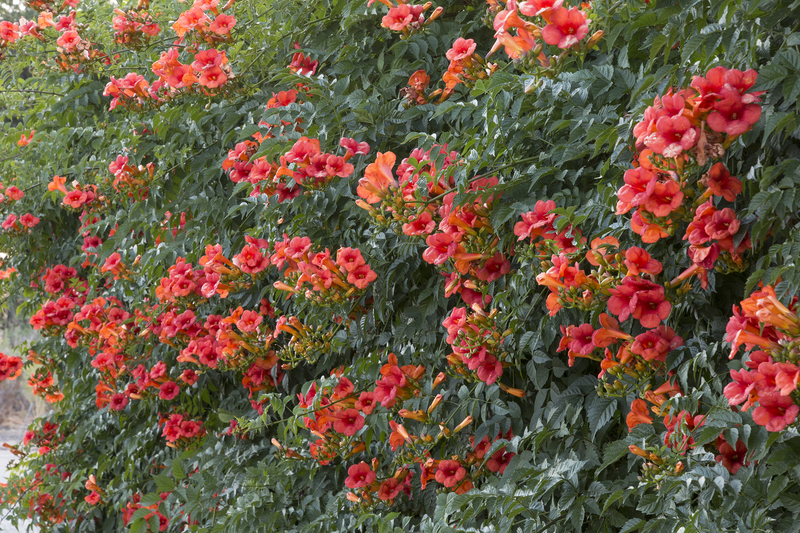Pachistachis is an ornamental deciduous evergreen plant from the Acanthaceae family, numbering about 25 species. It is native to the tropical forests of America, and also grows in the subtropical climate of the coast of Australia and East India. The plant is prized for its beautiful flowering and exquisite foliage. In common parlance, pachistakhis is called the "golden candle", which is due to the peculiarities of the structure of the inflorescences. Growing this exotic flower at home is not difficult if you follow the basic care guidelines. It will also be interesting to find out the existing signs, superstitions about pachistachis.
Content
What is remarkable about the flower
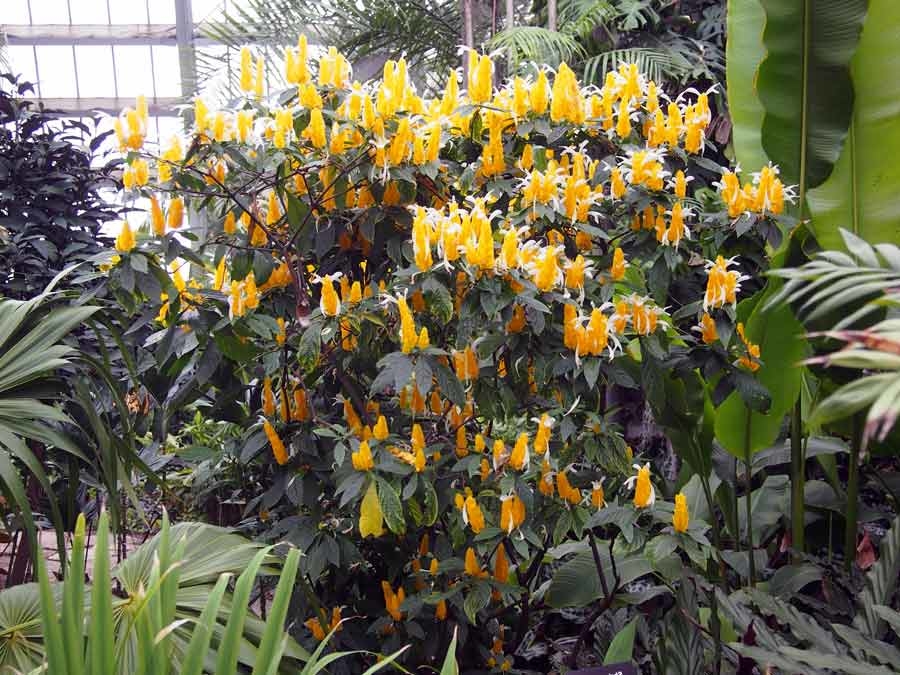
Pachistachis is a meter-high evergreen shrub. Its stems are upright, branching profusely, covered with dark green large foliage. The leaf plates have an oval-elongated shape with sharp tops. The decorativeness of the plant is given by a clearly visible vein pattern on the surface, due to which the leaves look voluminous.
Pachistachis blooms from late spring to early autumn... Inflorescences include multiple sepals of yellowish-orange color. Outwardly, the flowers resemble ears, only of a bright color: yellow, red, white - it depends on the variety. At home, yellow and red pachystachis are more common, which grow no more than 80 cm in height. But often growth is inhibited artificially by pinching the tips of the shoots. Then a lush and neat bush is formed.
Types of pachistachis with a photo
7 types of pachystachis are suitable for home cultivation, but only a few are most common.
Pachystachis yellow
A shrub with erect branching trunks 80–120 cm high. The inflorescences of the plant are spike-shaped, yellow with separately protruding white leaves. Flowering occurs throughout the growing season.
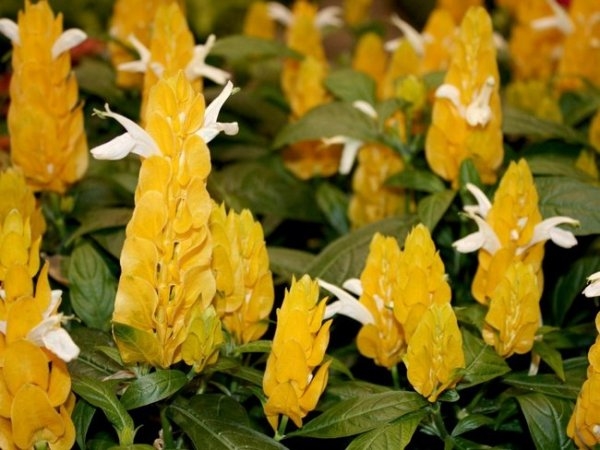
Pachystachis red
A flower popularly called the "Cardinal's Guardsman". The inflorescences are slightly different from their yellow counterpart - lush, feather-shaped, red. The bushes grow two meters high. Leaves are dark green, oval, up to 40 cm long.
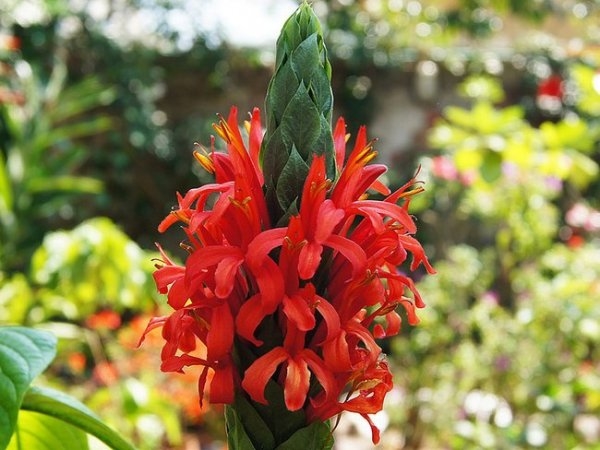
Spicate
A plant that is less commonly cultivated due to the difficulties in care. Mainly grown in greenhouses. The height of the stems is 1 meter. The flowers are deep red with orange pistils.
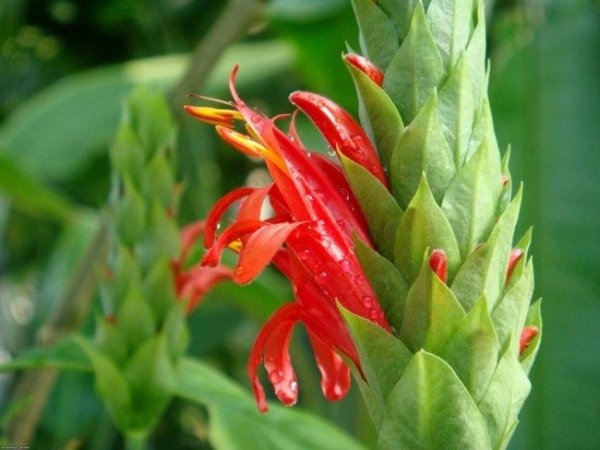
Signs and superstitions associated with a flower
The following is said about pachistachis:
- The presence of a flower creates harmony between loved ones and a favorable microclimate in the home. The plant will spread positive energy only on condition of reciprocal love for it from the household. Otherwise, it gradually loses its magical power.
- When you are close to pachistachis, new productive ideas are constantly being born, and quite intensively.
- If a healthy plant, with proper care, begins to lose inflorescences and leaves, then it is likely that bad news from relatives should soon come.
- Suddenly becoming bright flowers - a harbinger of some happy event.If the leaves dry up and curl, then significant difficulties are expected in the financial sector.
The plant is of particular benefit to choleric people: it smooths out a sharp change in mood, directs you in a positive direction, sets you in an optimistic mood. But the flower does not guarantee protection from negativity and bad thoughts of people who come to the house, but it provides support in good endeavors.
Reproduction
Florists propagate pachistachis mainly by rooting cuttings. You can prepare them separately or take the rest after spring pruning. The main thing is that each has 2-3 living internodes and a few leaves. Cut downwards, place the cuttings in water at a temperature of 22-23 ° C. Since leaves may fall off during rooting, it is better to cut them in half at once. Then the risk of falling leaves is minimal.
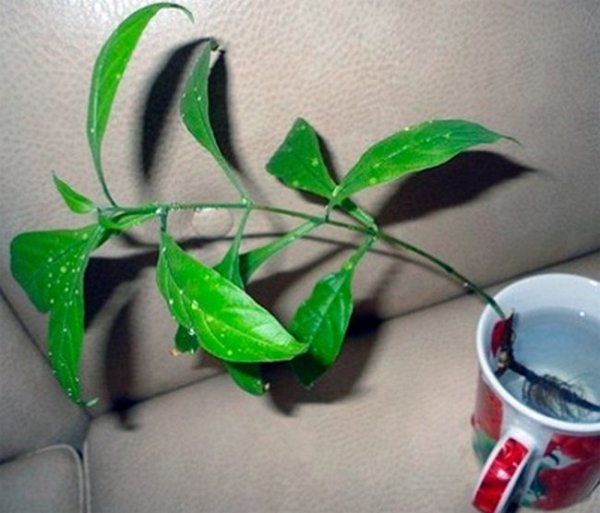
You can drop the cuttings into a specially prepared substrate. To do this, mix leafy earth, humus, peat, garden soil and perlite - they are taken in equal parts. The resulting mixture is filled into deep containers. Cuttings before rooting are treated with any growth stimulant. Top of the planting is covered with a glass or plastic cap to create a greenhouse effect. The planted cuttings are placed where there is good illumination, but there is no direct sunlight.
Further care includes regular watering and airing. When new roots sprout (approximately after 3 weeks), transplant into wide flower pots, several pieces each. As the tops of the shoots grow, they periodically pinch, which enhances lateral branching.
The seed method of reproduction is more laborious and ineffective, therefore it is rarely used.
Transfer
The first 2 years the plant is transplanted annually, then it is enough to do it with an interval of 4 years. The most favorable time for the procedure is February-March. They buy ready-made soil in a florist's shop or harvest them on their own, for which they combine garden soil with peat and leaf compost in equal parts. Additionally, it is recommended to mix vermiculite or pine bark, which makes the composition loose.

The root system of the culture grows in breadth, so the pot is chosen spacious, but shallow. The optimal volume is 3 liters.
- Drainage is poured at the bottom, for which expanded clay chips, broken brick, clay fragments are suitable.
- They are transplanted by a transshipment method - they capture the roots along with a lump of earth.
- The substrate is poured on the sides and on top, then watered well.
- In the next few days, the plant is not disturbed or watered, setting in shade.
- After adaptation, the pot is rearranged to a permanent place.
Care
Caring for pachistachis at home is not particularly time consuming, but it requires adherence to certain rules.
- In the spring and summer, it is watered abundantly, and moderately in winter. The intensity is determined individually by the rate of drying of the upper soil layer. It is important that the soil above is always damp. It is unacceptable to flood the flower or keep it in a drought for a long time. The water is preliminarily defended at room temperature for at least two days.
- Top dressing is applied only during the growing season. Use complex mineral compositions for ornamental houseplants. They are fed twice a month.
- Place the flower where diffused light will fall on it. In winter, artificial lighting is equipped to provide a daylight hours of at least 12 hours.
- The optimum temperature in the room is maintained at + 23 ... 25 ° C in summer and + 17 ... 18 ° C in winter. The required air humidity is 60–70%. At a lower rate, the plant must be systematically sprayed or placed next to a container with water.
The plant is not particularly demanding on the soil. The only condition is for it to be loose and enriched.
Since the flower grows slowly - about 10-12 cm per year, the formation of the crown by pinching the tops of the shoots is started in the second year after planting.
Pruning is carried out every year so that the flower does not lose its decorative appearance. The first time the bush is cut when it reaches a height of 20–25 cm. It is necessary to pinch the third pair of leaves on all newly developed lateral shoots. After hibernation, pinch and prune all the tops of the shoots. This is done with each tier.
Pachistakhis is famous for its beautiful flowering. It lasts from March to mid-October, if comfortable conditions are created for this. Flowers appear exclusively on new shoots.
After flowering, the bracts are immediately removed so that the plant can fully form flower buds in the next season. From the end of October, pachistachis enters the resting stage.
Care problems: table of signs and remedies
In the process of growing pachistachis, flower growers face problems. This is usually a consequence of care errors.
| Plant unhealthy symptoms | Causes | Correction methods |
| Dry and yellow tips on the leaves | It's too hot indoors | Stabilize temperature conditions |
| The foliage loses its elasticity and rich green color | Lack of moisture | It is necessary to spray more often |
| Slow growth of young leaves | Lack of light | Move the flower to a more illuminated place |
| Leaves curl or fall off | Reduced temperature | Provide additional heating in the room |
| Pale foliage, lack of flowering | Malnutrition | You will need to make top dressing at least 3 times a month |
A delay in flowering can be caused by a number of negative external factors:
- low temperature in a living room or being in a draft;
- dry air;
- frequent transplant.
In order for the plant to promptly please with abundant flowering, it is necessary to exclude any mistakes in care. It is recommended to plant pachistachis in a pot more tightly, which will provoke the start of the peduncle. No less important is a full-fledged fertilizing with mineral compositions.
Diseases and pests
The plant is rarely affected by pests and diseases due to its strong immunity.
Inhibition of growth, drying of leaves is evidence of the development of root rot due to too abundant watering. In this case, dig up a flower and examine the roots. Rotten areas are removed, the remaining roots are treated with a fungicidal preparation and transplanted into fresh soil. In the future, control the watering, preventing stagnation of water in the pot.
Of the pests are especially dangerous:
- mealybug;
- scabbards;
- spider mite;
- thrips;
- whitefly.
You can understand that the plant is affected by the white lumps or yellow dots on the plates that have appeared in the leaf sinuses. In the event of an attack by ticks, a thin cobweb entwines the stems and leaves.
To save the flower from death, the parasites are first removed by hand and the plant is washed under a warm shower. Next, the bush is treated with insecticides - Actellikt, Fitoverm. The procedure is carried out in the fresh air.
Pachistakhis is especially in demand in designer garden and park floriculture as a means of landscaping. In homes it can be found, but less often. This is due to some difficulties in creating conditions for this native of the tropics. If you competently approach the growing process and adhere to professional advice, then the flower will become a worthy interior decoration.

